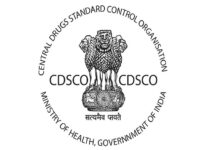In June 2017, the FDA announced that it will delay the active enforcement of the Drug Supply Chain Security Act (DSCSA) for pharmaceutical manufacturers to November 2018 due to industry-wide concerns that many members of the pharmaceutical supply chain are behind in implementing serialization systems and processes.
The recently released 2017 Global Drug Supply, Safety and Traceability Report surveyed 660 respondents across the supply chain and found that only one third of respondents believed they were very ready for serialization.
In this article, Anand Modi, vice president of TraceLink India, discusses what this means for pharmaceutical companies and why delaying preparations is a dangerous approach. The implications formarkets such as India, where pharmaceutical companies are under constant scrutiny due to more widespread quality concerns, will also be considered.
The DSCSA active enforcement delay
Counterfeit medicines are a major problem, placing patient safety at risk and costing the pharmaceutical industry billions of dollars every year. To combat the issue, over 50 countries will have enacted track-and-trace legislation by 2020. In the US, the DSCSA was enacted by Congress in 2013 and the associated requirements, development of standards, as well as thesystem for product tracing that pharmaceutical manufacturers, re-packagers, wholesale distributors, hospitals and pharmacies must comply with, will be phased in over a 10-year period, ending in 2023. The three phases outlined by the legislation include:
Phase 1: Lot level traceability
Already initiated in January 2015, this phase outlined the creation and exchange of Transaction Information (TI), Transaction History (TH) and Transaction Statements (TS) at the lot or batch level of identification. The requirement applies to all pharmaceutical sales from manufacturer to dispenser as well as the development of systems and processes to enable verification of complianceinformation for suspect product investigations.
Phase II: Item serialization
Beginning this year and phasing in until November 2020, every saleable unit of a pharmaceutical product will need to be marked with a unique Product Identifier (PI), including the National Drug Code (NDC) number, serial number, lot number and expiration date. This phase also requires that companies only engage in transactions involving serialized products. Additionally, manufacturers must verify serialized drug products at the packaging level within 24 hours of receiving a verification request from the US Food and Drug Administration (FDA), when requested by trading partners as part of a suspect product investigation, or as part of verifying the identity of saleable returns.
Phase III: Serialized item-level traceability
Beginning November 2023, requirements will be introduced to implement an interoperable, electronic tracing capability at the item or saleable unit level for all transactions from manufacturer to dispenser. This will allow for serialized item traceability back to product origin.
In June, the FDA announced a one-year active enforcement delay to the DSCSA. The delay was announced due to concerns that many companies in the supply chain would be unable to meet the 2017 deadline, potentially jeopardizing continuity of product supply.
Dispelling the myths of enforcement discretion
Despiterecent developments,the DSCSA requirements for marketing authorization holders (MAHs) remain unchanged and are now actively in effect (which began on November 27, 2017.) The FDA’s commitment is to ‘exercise enforcement discretion’ against manufacturers who do not affix product identifiers to packs and homogenous cases of pharmaceutical products and do not verify the product where required under the original timeframes until November 27, 2018.
During the period of enforcement discretion, the FDA is unlikely to inspect and penalize companies without good reason. However, if an incident occurs and there is an impact on patient safety, companies that are not in compliance can be investigated by the FDA and could be held accountable for not complying with the law.
No time for delay
Industry’s response to the enforcement discretion has shown that the time and resources needed to implement serialization has been vastly underestimated by many organizations. Many companies that use contract manufacturing organizations (CMOs,) are only just realizing the true complexities of the task. Proving this point, several surveys undertaken by TraceLink have indicateda lack of readiness in the external supply ecosystem, listing CMOs as a contributing factor to why pharmaceutical companies are not in aposition to meet the serialization deadlines. In fact, the latest results from the 2017 Global Drug Supply, Safety and Traceability Report showed that only 23% of CMOs with customers complying with DSCSA regulations were fully integrated with 80 – 100% of their pharmaceutical customers.
Despite the sense of relief that washed over the industry when the FDA announced the enforcement discretion, pharmaceutical companies must resist the temptation to embrace the ‘delay’ and put serialization projects on the backburner.Serialization preparations take time to execute, so for any companies that have not begun the process, there is no guarantee that even with the extension they will be ready by November 2018. The delay provides time for them todeploy a plan of action and identify reputable serialization partners to help meet the challenging timeframes and oversee the successful rollout of their implementation.
The global race to serialize and ship products to the US
The DSCSA enforcement discretionwill have a varying impact on different geographies that supply pharmaceutical products to the US.In India, for example, companies are dealing with the need to be compliant with two sets of regulations, the DSCSA and the Drugs Authentication and Verification Application (DAVA). Whereas the DSCSA is targeted at the US supply chain, DAVA applies to the export of drug products from India. DAVA requires the submission of master data and preproduction information, serialization and aggregation, into a central repository, whilethe DSCSA takes a less prescriptive approach, absent of any government-managed data repository.
The Directorate General of Foreign Trade (DGFT) made unique numbers and barcodes mandatory on tertiary, secondary and primary packaging for all pharmaceuticals exported from India from July 1st 2014. This requires the incorporation of 2D barcodes (GS1 data matrix)on medicines at the strip, bottle and vial level, as well as the encoding ofglobal trade identification numbers (GTIN) and unique serial numbers.
While the majority of the Indian pharmaceutical industry is working towards achieving track-and-trace compliance, the level of preparedness between companies varies. Like the US, there are companies that are ahead of the curve and are already serializing product,others that are in the process of implementing projects, and some companies that are struggling to initiate their programs. As the region is predominantly a generics industry, companies are also dealing with much higher volumes of product and increased cost sensitivities.
Compliance programs are complex, and with large stakes in the US, companies need to understand what is required from them. A lot of generics companies in India have a predisposition to focus on the physical packaging lines but this is just one factor. Global compliance is about data and there needs to be a more holistic view on what a program should involve, with timelines and resources built around this. For example, software, hardware, existing systems, writing standard operating procedures(SOPs), and the identification of interfaces and architecture, all need to be considered.
For all companies that export to the US, risk of non-compliance will impact continuation of supply. The advantages of getting the process right could be a key differentiator in a highly competitive generics market.
Closing thought
The enforcement discretion will help to ensure that companies are not unduly penalized for failing to meet the now pastNovember 2017 deadline. However, the reality of the situation is that companies will facefull enforcement by November 2018, which is still a relatively short timeframe to achieve compliance. Companies cannot afford to be complacent and must continue their serialization projects as originally planned.
The question for manufacturers now is, ‘are we going to ensure compliance with the law or risk the chance of encountering penalties if problems occur?’ Business sense says there’s only one answer. Those companies that push forward to implement a flexible, scalable, and future-proof serialization solution this year will alleviate many of the pain points further down the line.
Anand Modi, VP India sales
Anand Modi is vice president of sales in India at TraceLink, where he brings fifteen years of senior management leadership in consultative sales spanning life sciences, manufacturing and enterprise software industries. Since joining TraceLink in 2015, he has been active in executing growth strategies and establishing channel partner networks.
Modi’s experience includes developing start-up operations and delivering top-line growth. Prior to joining TraceLink, he spearheaded business development strategies for software and service solutions in the scientific research, analytical and QA/QC space for India and the Middle East markets, at PerkinElmer Informatics. Before that, as head of sales and marketing at Columbus IT Solutions, he built from the ground up the sales infrastructure and a partner network for resource augmentation.
Modi holds and engineer’s degree in industrial engineering from The Maharaja Sayajirao University of Baroda.


















